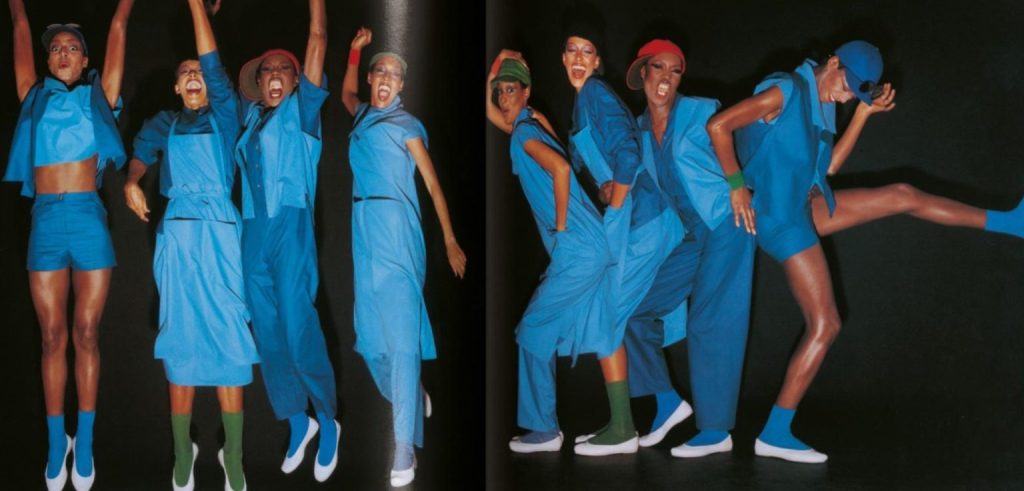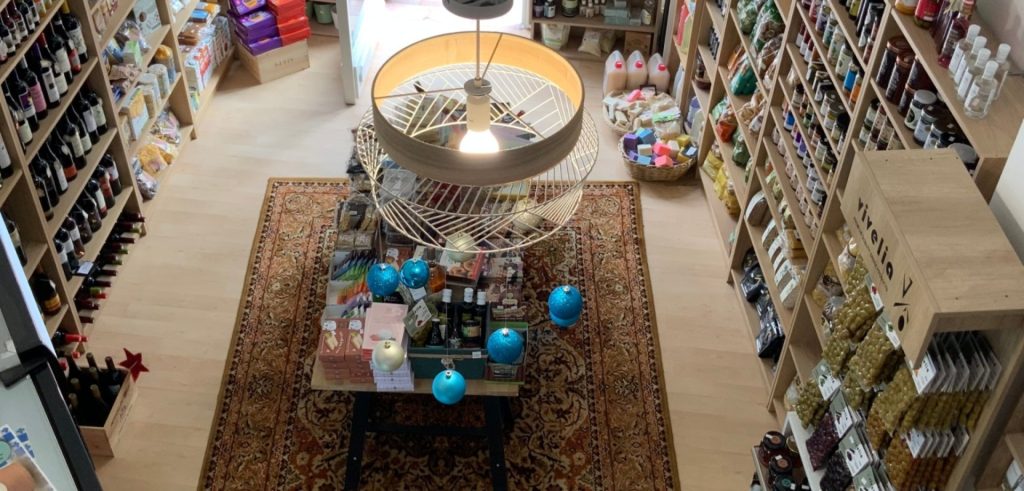Author: Pepi Nikolopoulou
photos: © Pepi Nikolopoulou
Time has been flowing along its paths quickly but steadily in recent years. My first visit to Folegandros took place exactly twenty years ago, in 2003. Already a developed island, because although it started as a barren island on the Cycladic line, in the last 10-15 years it has been growing rapidly, a little frightening, with visitors who either loved it or never visited it again. Because it has its own rules, its own character and if you try to change it even a little bit it will calmly and simply send you away, just as it welcomes you.
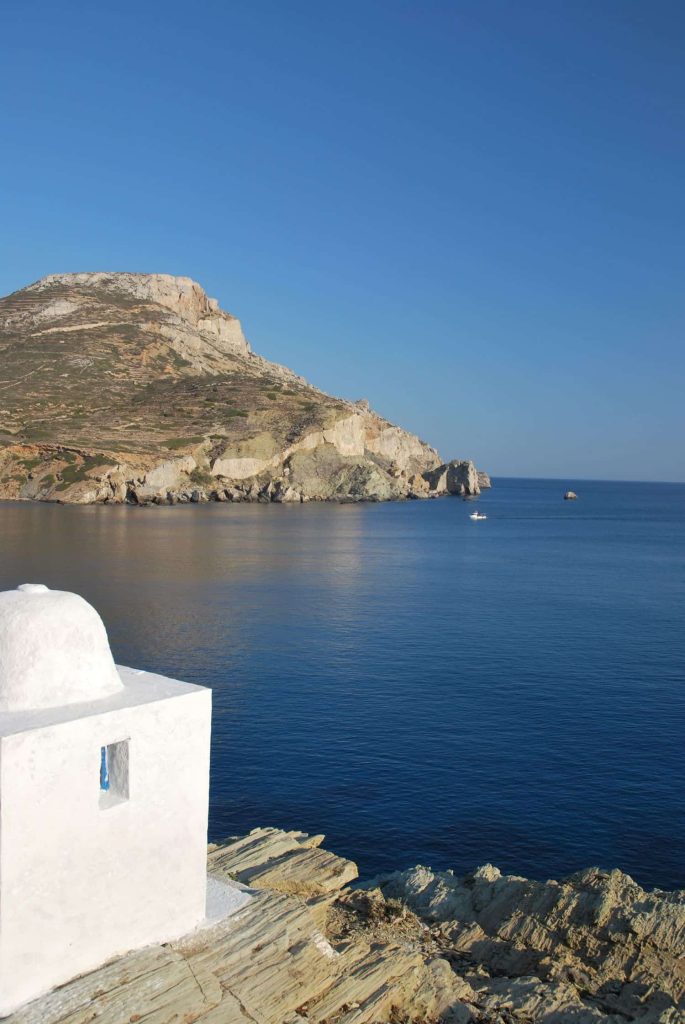
Folegandros has put its mark deep on my map. And it’s not just because it has the most beautiful Chora of the Cyclades. And of course not for its small beaches, nor for its few villages. It’s because every time it frees me from the sedentariness of the city, because every time I climb the cobbled path above Agali, scratching my feet to reach my favourite mountainous chapel, I feel that the sea embraces me and I want to stretch out my arms and take a long breath, while when I sail through its narrow alleys I feel local, I feel that I belong to it. It’s because every time since 2003 I’ve left a little piece of souvenir to chew on again the next time I’m on the island.
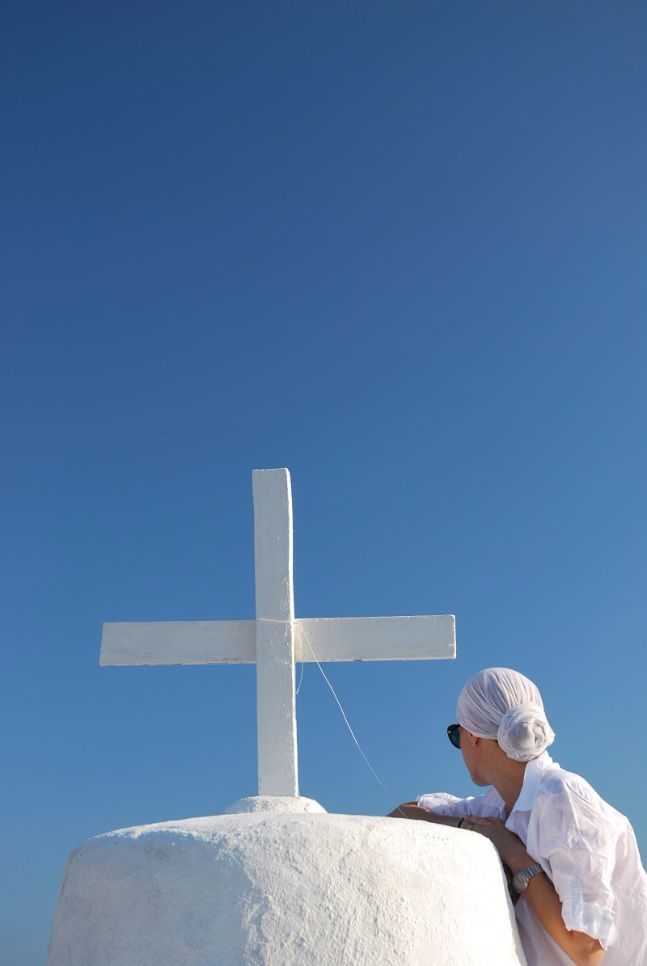
There between the 3 squares that define the place where its heart beats, as if taken from its theatrical Country setting, exhausted by the rhythms of the cement city, I am rejuvenated – I have laughed with the newly formed company, I have exchanged with friends on the spur of the moment, I’ve quarreled, I’ve indulged in confessions, I’ve hummed “tell me sea how many secrets you’re hiding from the world” while drinking rakomelo, I’ve calmed down gazing at the sea from Punta, I’ve cooled down in its plane trees. A place that became a time, completely personal.

Chora, the most beautiful of the Cyclades
I personally award it as the best country in the Cyclades. Unapproachable by cars, the Chora of Folegandros is perched at 200 meters, overlooking the sea, while on the right hangs the church of Panagia, which especially at dusk you can’t miss this walk. In the centre, the 3 large squares, like a hand in a circle, have formed this unique character of Chora. Everything is there, concentrated.
The square of Pounda, the big balcony towards the Aegean Sea, follows the square of Dunavi under big trees. The huge cisterns with rainwater in the basement were built in 1770, the main reason why the square is named after Europe’s largest river. It is accompanied by the church of Agios Nikolaos, while just before reaching the main Piazza Piazza, we find a cluster of churches, Agios Antonios, Agios Ekaterini and Agios Fanourios, which make up a unique theatrical setting that is hard to forget.
The small stylish shops, such as the Giant’s carpentry shop for handmade toys, and the Stolidaki and others for souvenir clothes quite elegant, the restaurants, the bakery, the Super Market.

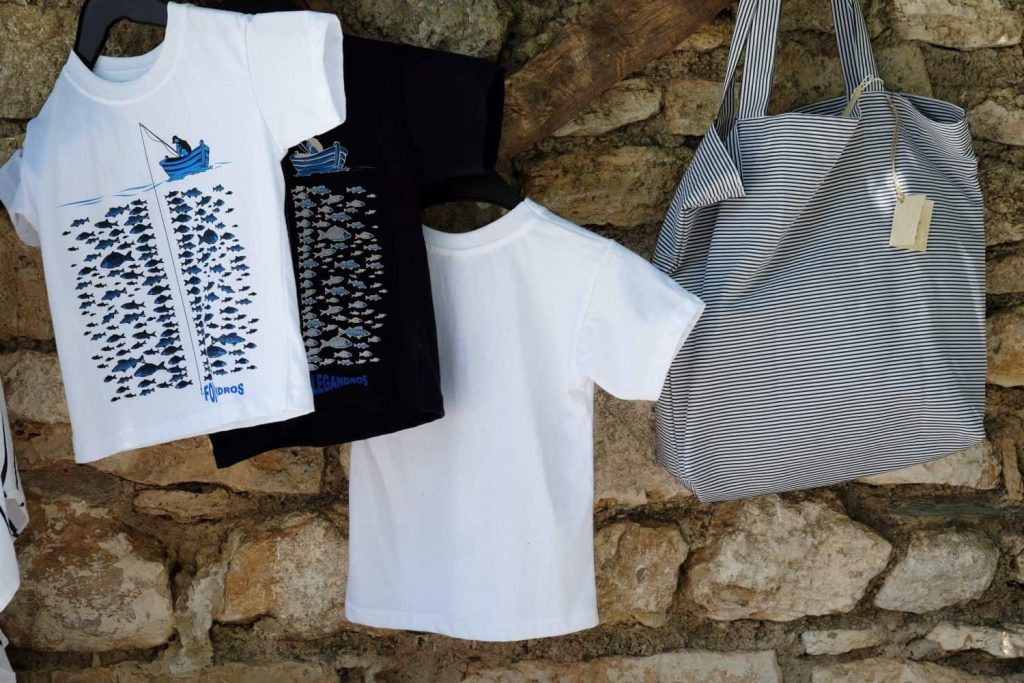

There and the entrance to the Castle. Loggia and Paraporti are the two entrances to the unique setting of the castle town, with the northern side standing on the edge of the cliff. From my favourite Paraporty I choose, I feel drawn to it like a magnet, it feels like stepping into another era. Safe houses, away from the gaze of would-be pirates, like monastic cells stacked side by side, with no openings. Here the flat staircases, always clean and whitewashed, still function as sitting rooms, as they did when they were built somewhere around 1215 to rest if you want to.
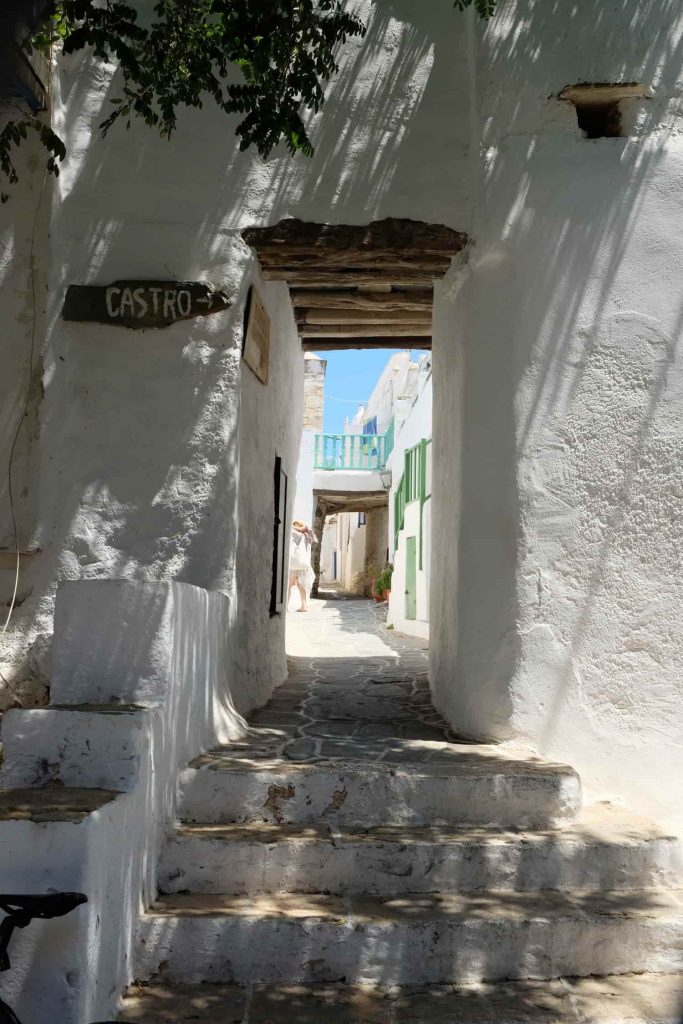
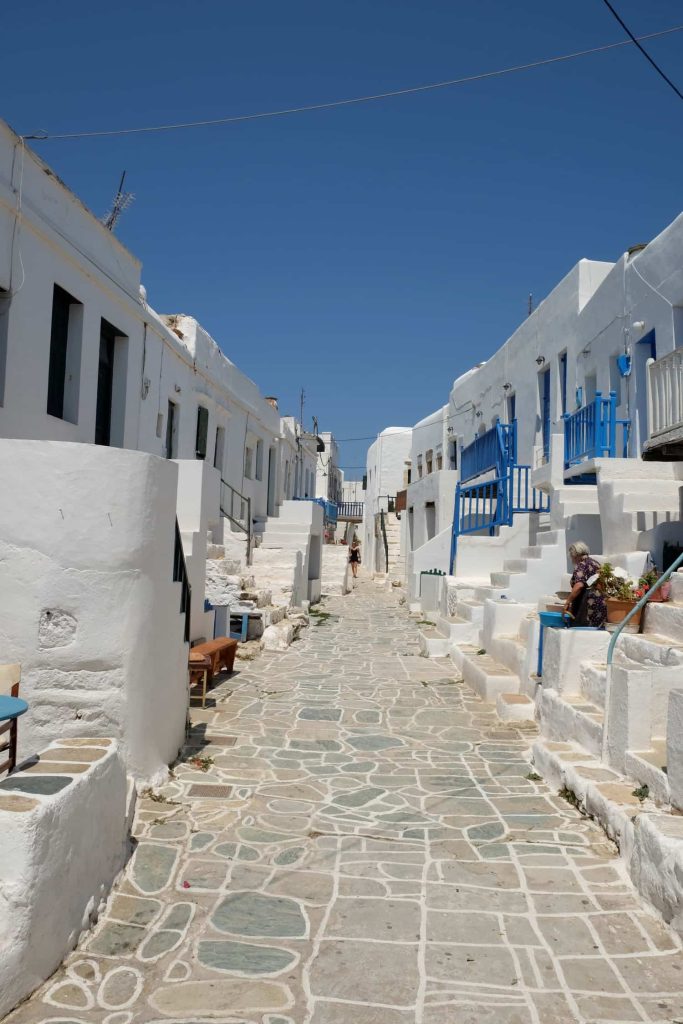
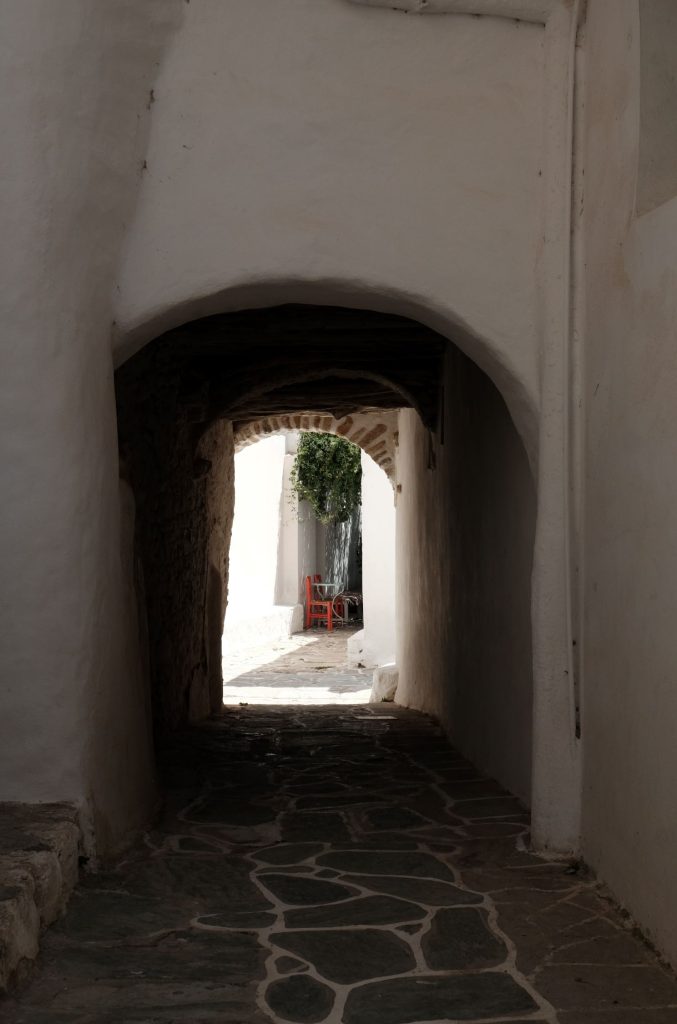
Even if you are not a hiking fanatic, the Panagia of Chora, a rare example of Aegean temple architecture, is a sight not to be missed. It literally takes your breath away. It is approached on foot by wide whitewashed steps that start from the Primary School (Pl. Poundas) of Chora. It used to function as the catholic of a women’s monastery and took its present form between 1816-1821. Inside the church, the marble iconostasis of the 19th century and the icon of Hodegetria stand out.

Seas – The Wounded
Always the thorn will call us. Crystal clear waters and a small pebble to read, rest your mind for a while or take your next shot at diving on the rocks to her left, a treat for all. Above Agali, the dirt path will lead you to Galifos (with its rooms without electricity and its magical little beach) to continue to the sandy beach of Agios Nikolaos, a distance of about 20 minutes. There is another trail that starts from Ano Meria and the descent takes about 40 minutes.

Notes: Although nudism is forbidden as the sign on Galifos states, it is perhaps the only beach on the island where it is allowed. I’m not saying it’s a paradox, but it’s worth a visit.
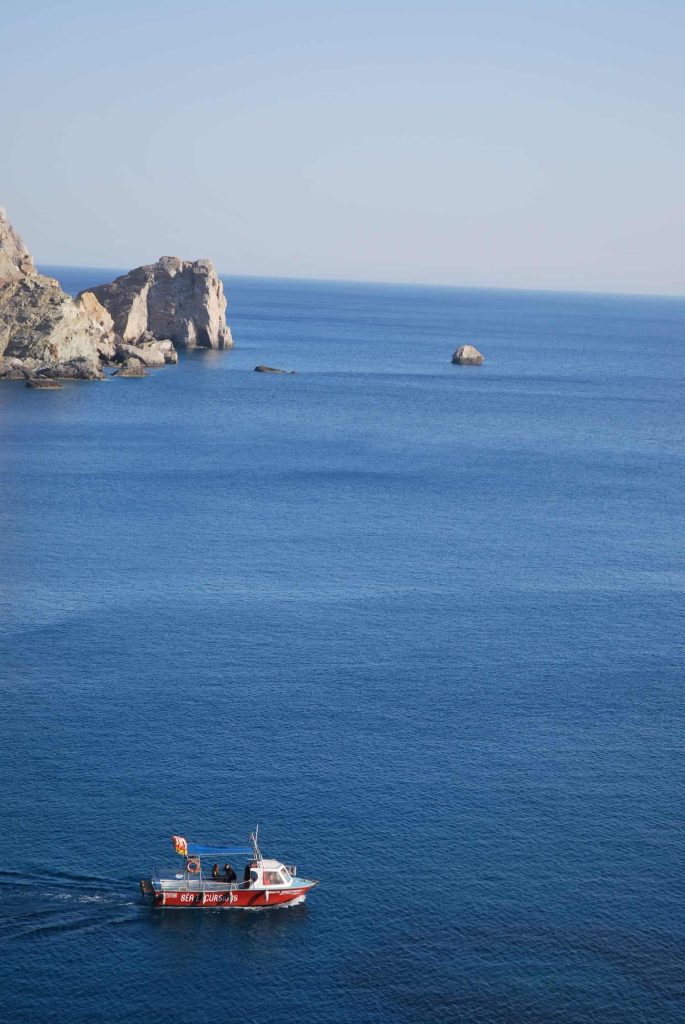
Rumours often tell the unsuspecting that the island has no beaches. We will only agree on this: Folegandros does not have the variety of beaches of Serifos. Of course. However, it is home to some beautiful beaches that are worth the dip, such as Vardia, easily accessible on foot from Karavostasi, Livadi and Katergos, easily visited by boat. Ai Giorgis is a picturesque beach in the north of the island but due to strong winds the sea gets rough. If one is lucky, however, it is worth it. The beach can be reached by a path that descends from Merovigli in Ano Meria for 25 minutes or by vehicle via a heavy dirt road that starts just before Panagia Chrysopigi (on the road that continues after Ano Meria).
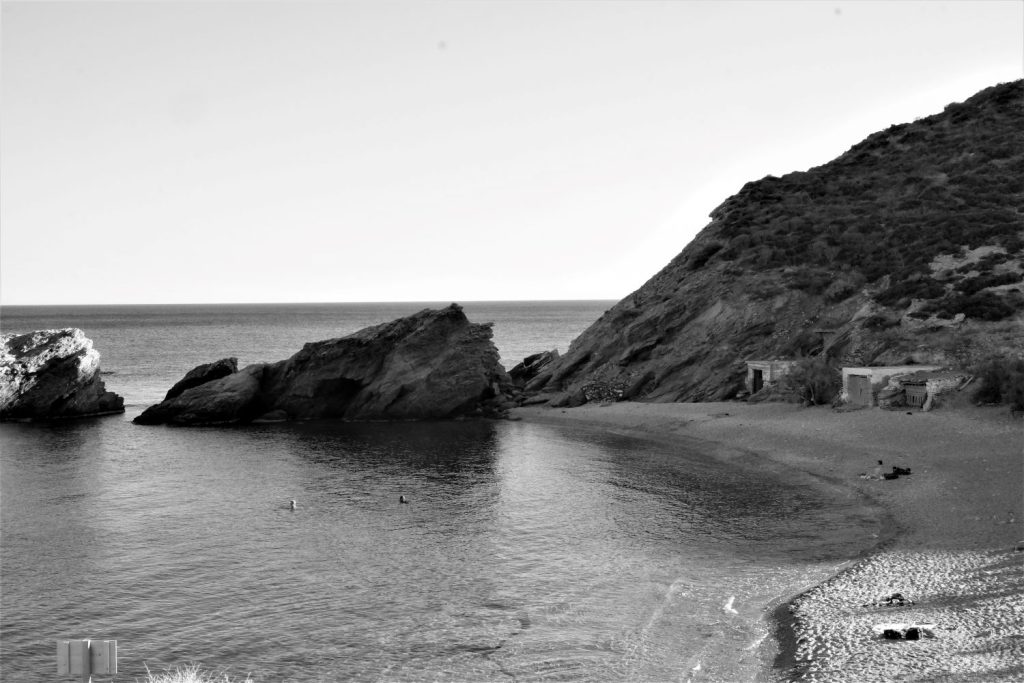
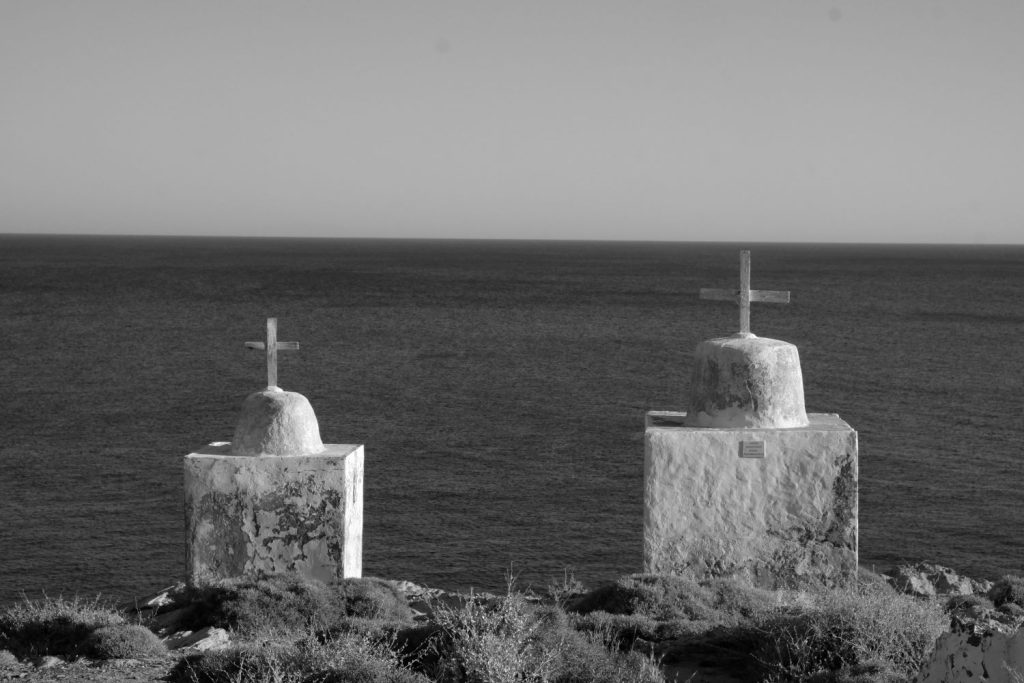

But even if you stay in Agali, it has a way of embracing you and keeping you without a moment of boredom and need for change.
Food and drink | Breakfasts in Chora and Matsata after the dives
If you go to Folegandros you can’t help but try Matsata – traditional pasta made by hand. They are very similar to noodles, however they are cooked as soon as they are made. They are not sold in shops, but you can find them in the island’s shops, where they are served either with a simple red sauce or with braised meat, rooster or rabbit. Every time I will be present in Ano Meria, in the Meeting for a plate of matsata. Of course you’ll find them in many other places but there they all seem somehow frozen in time and that’s the charm.

And rustic salad always with souroto (soft white cheese) – the second best thing in Folegandros after Matsata.

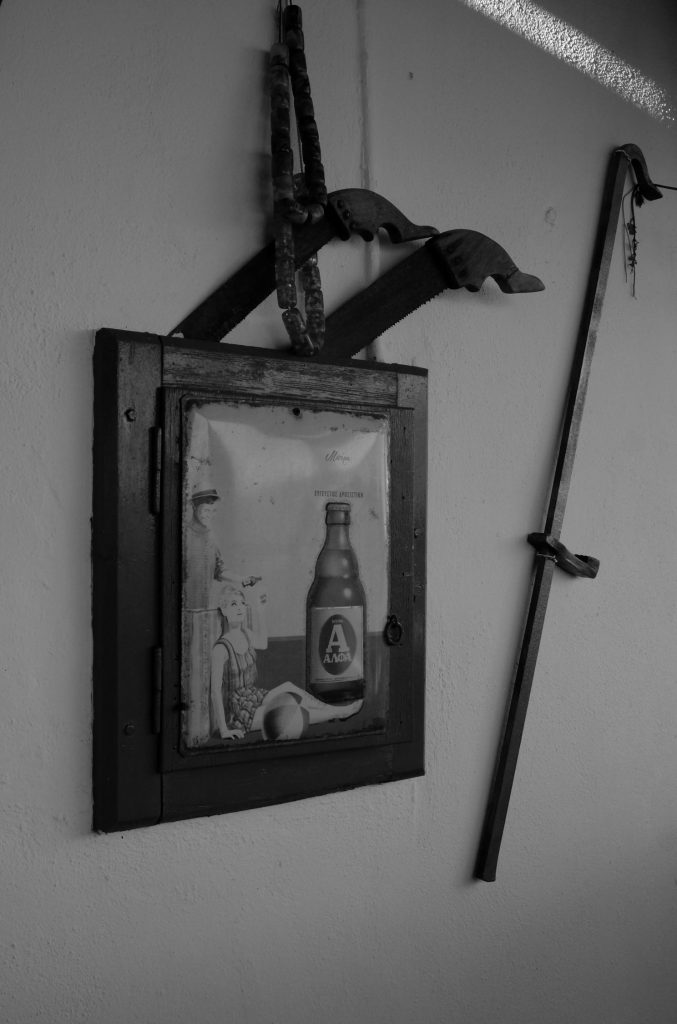
For a quick souvlaki on the hand, in recent years we have added Maragoudiko in Ano Meria along with other grilled delicacies (wraps, calamari, spicy sausage) to our discoveries. However, we have eaten deliciously at Sik, Piatsa, Kritiko and Spitiko, which I think makes by far the best stews.
Mornings in Folegandros also have a different air. I love the square and Araxe, which although they are usually a bit crooked due to the crowds, the spot under the trees and the quality of their breakfast is excellent. Loja a little further on (excellent service and smiling young people) and of course the lovely Punta’s garden. Every time I feel like I’m in my grandmother’s garden. Little kittens accompany you and the people are always pleasant. Especially their fruit yoghurt is unsurpassed.
If the beach is a one-way street for one’s breakfast, then just before setting off, I would definitely suggest a stop at the baker’s in Chora for the classic aniseed bun and pasteli.

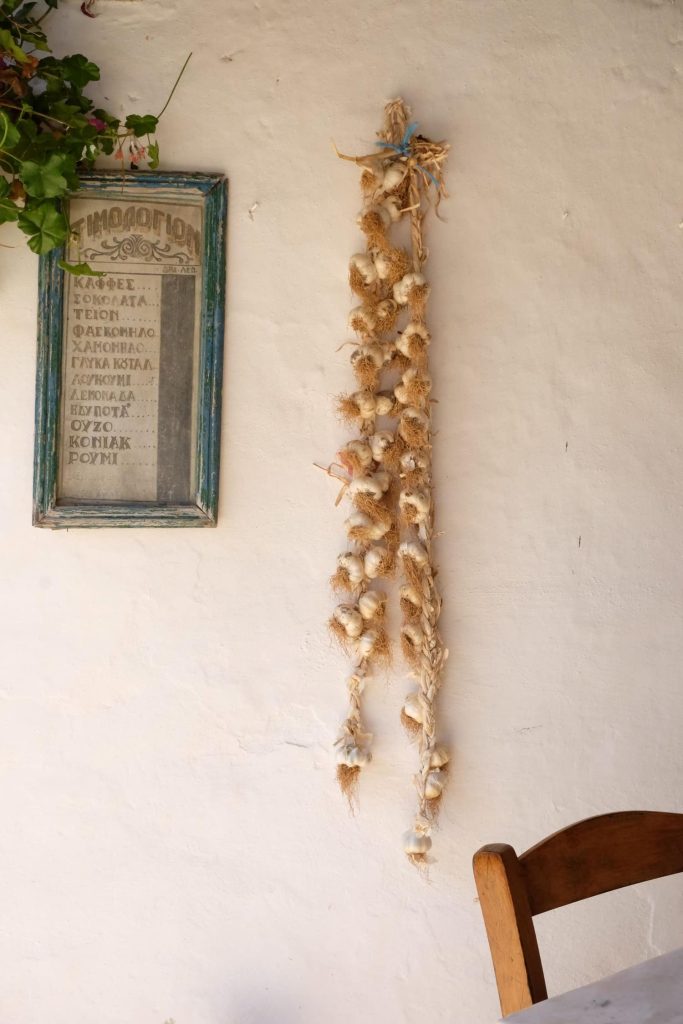
As I write I am nostalgic for the evening drinks at Baraki with our dear friend Vassilis. A pass there if Astarte is curdled will make up for it. And don’t be in a hurry to leave before the moon goes out. The night of Folegandros has many more secrets to reveal to you.



